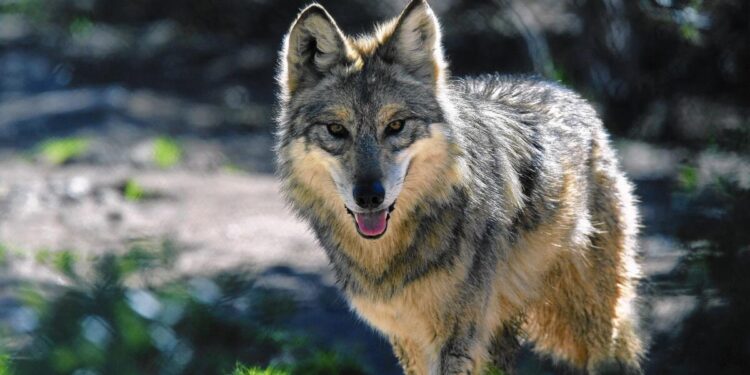Woodland Park Zoo welcomed four critically endangered Mexican gray wolves to its Living Northwest Trail, marking the return of wolves to the Seattle facility as part of a national conservation effort.
The 6-year-old male wolves, all brothers born at California’s Wolf Center, recently arrived at their new Seattle habitat where they are adjusting to unfamiliar surroundings and may initially appear reserved to visitors.
Pat Owen, the zoo’s Animal Care Manager, requested visitor cooperation during the wolves’ acclimation period. “We kindly ask our guests to avoid howling at the wolves as it can cause stress for the animals,” Owen said.
The Mexican gray wolf represents the rarest and smallest subspecies of gray wolf in North America, with only an estimated 286 individuals surviving in wild populations across Arizona and New Mexico. Their distinctive coats display combinations of buff, gray, rust, and black coloring, often featuring unique facial patterns that distinguish individual animals.
The wolves serve as conservation ambassadors through the Association of Zoos and Aquariums’ SAFE (Saving Animals From Extinction) program, which coordinates efforts to protect species facing extinction threats.
“We are thrilled to bring wolves back to the Living Northwest Trail for guests to enjoy and learn from,” Owen said, emphasizing the educational value of the new residents. “As conservation ambassadors, the wolves will help highlight the challenges and opportunities for species recovery.”
The exhibit provides opportunities for visitors to observe wolf behavior and learn about conservation challenges facing the subspecies. Owen noted the broader educational impact: “It’s an incredible opportunity for people of all ages to connect with wolves at the zoo and learn about this remarkable species.”
Woodland Park Zoo actively supports wolf recovery efforts throughout Washington state, advocating for nonlethal approaches to managing conflicts between wolves and livestock operations. The institution promotes science-based conservation decisions that balance wildlife protection with agricultural concerns.
The Mexican gray wolf’s precarious conservation status reflects decades of persecution and habitat loss that nearly drove the subspecies to extinction. Recovery efforts have slowly increased wild populations through captive breeding programs and strategic reintroduction initiatives.
The four brothers represent genetic diversity crucial for species survival, with zoos nationwide coordinating breeding recommendations to maintain healthy captive populations that can support wild recovery efforts.
Visitors can observe the wolves along the Living Northwest Trail as the animals become comfortable in their new environment, contributing to public awareness about endangered species conservation and the importance of protecting native wildlife.







